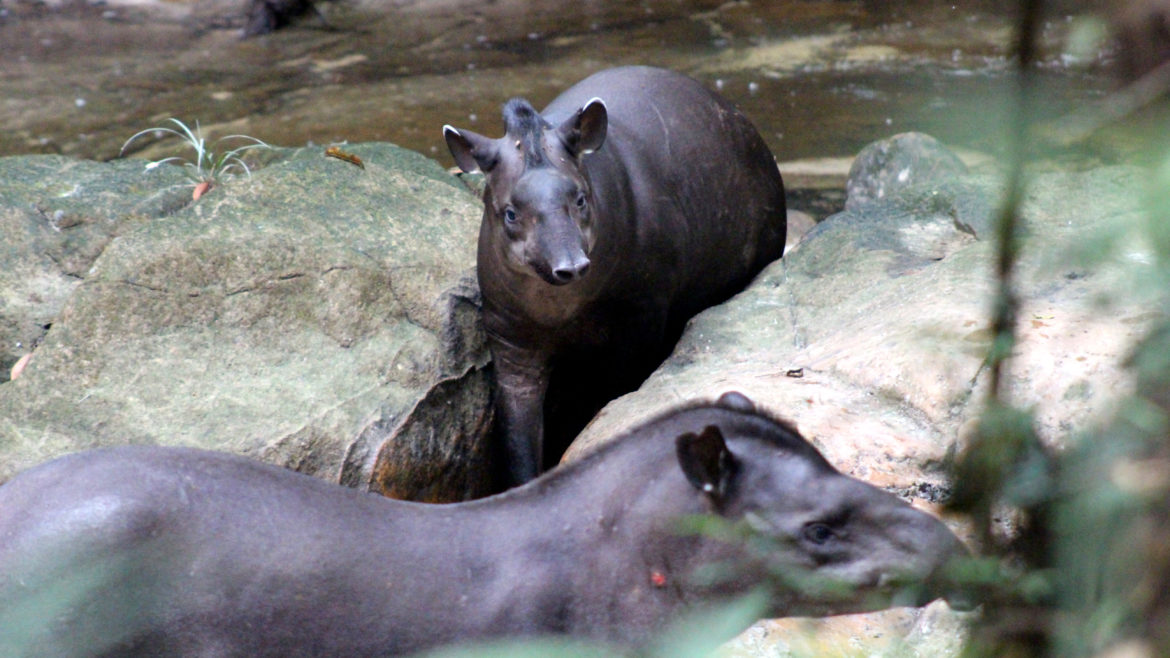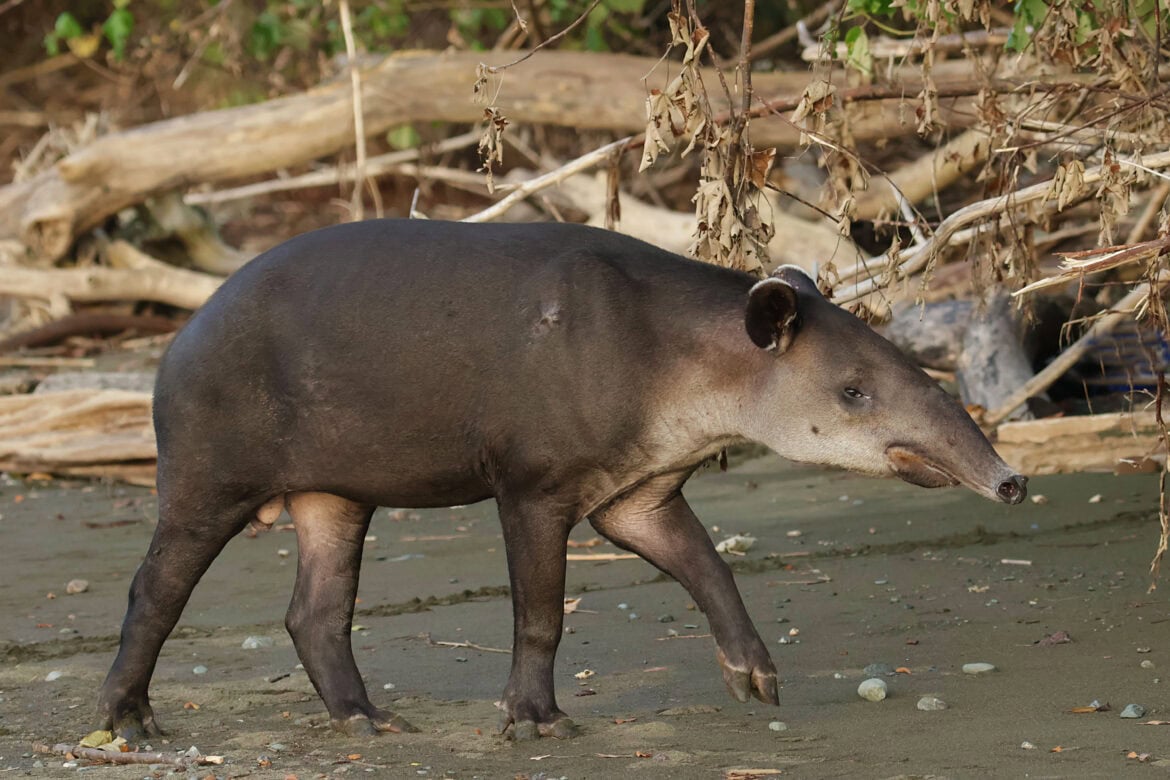
Every April 27, we celebrate World Tapir Day—a chance to shine a spotlight on one of the Amazon’s most unique and underappreciated animals: the tapir.
Often described as a cross between a pig and an anteater, the Amazon tapir (also known as the South American tapir or lowland tapir) is neither. In fact, its closest relatives are horses and rhinoceroses! These shy, solitary creatures play an essential role in maintaining the health of the Amazon rainforest, yet they remain one of its most mysterious inhabitants.
What is a Tapir, Anyway?
Tapirs are large, herbivorous mammals with prehensile snouts that resemble short trunks. There are four tapir species in the world, and the Amazon tapir (Tapirus terrestris) is the largest terrestrial mammal in South America. Adult tapirs can weigh up to 550 pounds (250 kg) and grow to more than six feet in length.
Despite their size, tapirs are surprisingly quiet and elusive, spending much of their time foraging for fruit, leaves, and aquatic vegetation—usually at night. They’re excellent swimmers and often cool off in rivers and streams, which also helps them escape predators like jaguars and pumas.
Nature’s Unsung Gardeners
Amazon tapirs are often called “gardeners of the forest” thanks to their critical role in seed dispersal. As they roam through the jungle eating fruit, they carry seeds in their digestive tracts and deposit them throughout the forest in their droppings. This natural process helps maintain plant diversity and contributes to forest regeneration.
Some trees even depend on tapirs to transport their seeds over long distances. Without tapirs, these plant species—and the animals that depend on them—could struggle to survive.

Tapirs in Trouble
Although they’ve roamed the Earth for tens of millions of years, tapirs now face serious threats. The Amazon tapir is listed as Vulnerable by the International Union for Conservation of Nature (IUCN). Its biggest threats? Deforestation, habitat fragmentation, and illegal hunting.
As Amazon rainforest animals lose their habitat to expanding agriculture, roads, and logging operations, tapirs are increasingly forced into smaller, disconnected patches of forest. This not only limits their food sources and range, but also increases their risk of being hunted or hit by vehicles.
Tapir Conservation in Action
At the Amazon Conservation Team (ACT), protecting tapir habitat is part of our broader mission to defend the Amazon’s rich biodiversity and Indigenous stewardship. Tapirs thrive in healthy, intact rainforest ecosystems—exactly the kind of landscapes that Indigenous communities work so hard to preserve.
By supporting Indigenous land rights, mapping and protecting sacred natural sites, and collaborating on sustainable land-use plans, ACT helps ensure that species like the Amazon tapir have a future in the forest.
Did You Know? Fun Tapir Facts
- Tapir babies are polka-dotted! Calves are born with striped and spotted coats that help camouflage them in the forest. These markings fade after a few months.
- They’ve been around forever. Tapirs belong to an ancient lineage that dates back over 20 million years—prehistoric survivors!
- Built-in snorkel: A tapir’s long nose isn’t just adorable—it also acts like a snorkel while swimming.
- Loners by nature: Tapirs are mostly solitary except during mating season or when raising young.
Don’t miss these powerful stories and updates. Sign up for our newsletter today!
Share this post
Bring awareness to our projects and mission by sharing this post with your friends.




